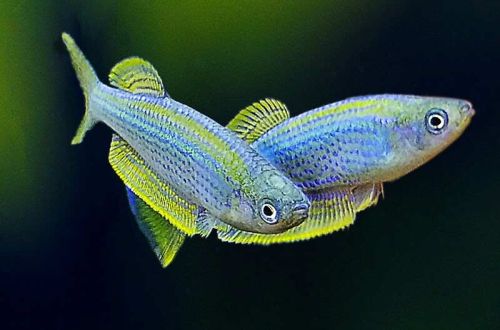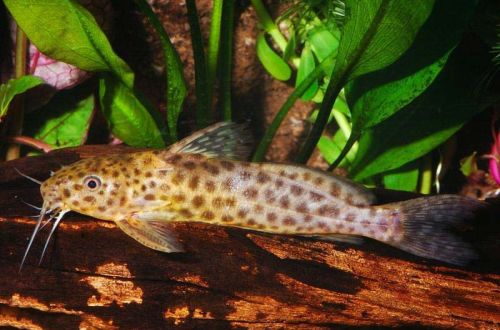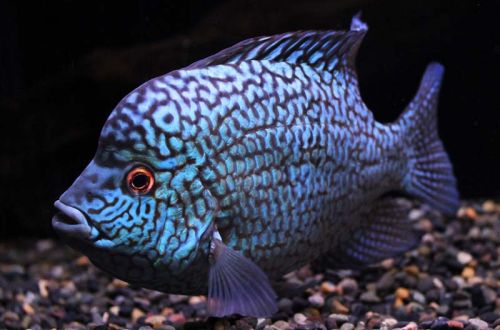
Lamprichtis Tanganyika
Lamprichthys tanganyika, also known as Tanganyika killifish, scientific name Lamprichthys tanganicanus, belongs to the family Poeciliidae (Peciliaceae). Despite its name, it is not related to Killy Fish. It is a close relative of Guppy, Mchenostsev and Pecilia, but unlike them, it is not capable of live birth, laying habitual eggs.

Contents
Habitat
Endemic to Lake Tanganyika, located in eastern Africa. Lives in the coastal zone in open water.
Description
Adults reach a length of up to 15 cm. Males have a yellow-gray color with numerous rows of blue dotted lines, consisting of “luminescent” specks. The long anal fin extends from the middle of the abdomen to the tail.
The females are noticeably more modestly colored. Color is solid silver. The size and shape of the anal fin is also different – a short triangular one.
Behavior and Compatibility
Peaceful mobile fish, needs the company of relatives, therefore it is recommended to purchase a flock of at least 6-8 individuals. Males compete with each other for the attention of females, but the rivalry is demonstrative. There were no cases of traumatism.
Although the fish comes from Tanganyika, it is not worth settling it along with cichlids that live in the same lake. In the limited space of the aquarium, there is a high probability of attacks by territorial cichlids on harmless Lamprichthys. But the same gregarious Cyprichromis leptosomes are quite acceptable.
Brief information:
- The volume of the aquarium – from 200 liters.
- Temperature – 23-25°C
- Value pH — 8.0–8.5
- Water hardness – hard (from 14 dGH)
- Substrate type – sandy, rocky
- Lighting – moderate
- Brackish water – no
- Water movement is weak
- The size of the fish is about 15 cm.
- Food – any food
- Temperament – peaceful
- Keeping in a flock of 8–10 individuals together with other species
- Life expectancy about 3 years
Maintenance and care, arrangement of the aquarium
The optimal size of the aquarium for a small flock of 6-8 individuals starts from 200 liters. The decor is simple. The typical biotope of Lake Tanganyika is not rich in diversity. Basically, these are rock heaps and sandbanks. Similar decoration of the aquarium can be considered quite acceptable. Areas with thickets of Vallisneria will add green accents to the design.
Lake water has high pH and GH values that need to be recreated and maintained in an aquarium. To this end, it is important to regularly replace part of the water with fresh water and remove accumulated organic waste that can affect the pH.
May be overly susceptible to abrupt switching on of light. The contrast of night and day can cause anxiety among the fish, and they will start to beat against the walls of the aquarium. In the morning, before turning on the main lighting in the aquarium, you should first turn on the light in the room for a while. If the lamp is adjustable, then morning lighting should be started at low brightness and gradually brought to normal values.
Food
It is recommended to serve a mixture of live and frozen foods such as brine shrimp, mosquito larvae, daphnia. However, some aquarists feed exclusively on high-quality dry food, which does not affect color and reproductive performance.
Reproduction / breeding
As noted above, Lamprichthys Tanganyika belongs to the same family as the popular aquarium viviparous fish (Guppies, Swordtails, etc.). But in the course of evolution, it retained the traditional method of reproduction – caviar. In nature, fish spawn among the crevices of stones, where it is in relative safety. In aquariums, in the absence of suitable places, the eggs will be scattered all over the bottom.
A detailed report on the breeding of Tanganyika Killie Fish can be found in a separate article.





